6 minutes reading time
Economy & Central Bank Outlook
- The major monetary highlight during the past month was the larger than expected 0.5% US Fed rate cut, taking the Fed funds rate to a 4.75-5% range. Markets are anticipating 1.75% worth of US rate cuts over the next 12 months.
- Importantly, the Fed is confident that inflation should continue to ease, in line with a gradual easing in labour market strength, and its aggressive rate cut was seen as insurance against the tail risk of a larger-than-desired economic slowing.
- In Australia, the August monthly CPI report revealed a welcome easing in underlying inflation, though there’s some uncertainty as to the extent that the inflation numbers are being distorted by government cost-of-living support measures. The RBA again left rates on hold last month and played down the prospect of rate cuts this year. That said, markets are pricing in 1% worth of rate cuts over the next 12 months.
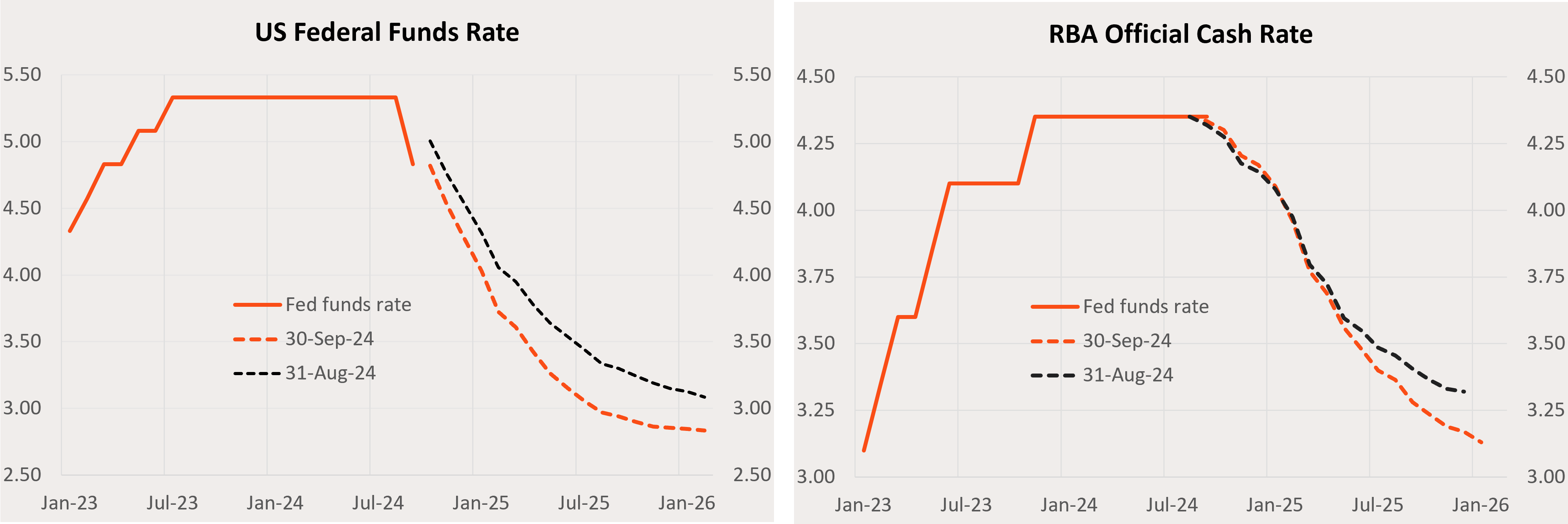
Source: Bloomberg, LSEG, Betashares.
Bond Yields & Credit Spreads
- Reflecting deeper rate-cut expectations, US 10-year bond yields eased a further 0.12% in September to 3.78%. Australian 10-year bond yields edged 0.03% higher, however, to 4.0%.
- Given we could be at the early stages of the rate cut cycle, 10-year bond yields should continue to trend lower in coming months, possibly into the 3-3.5% range.
- Credit spreads continued to ease over the month, consistent with the global soft landing scenario.
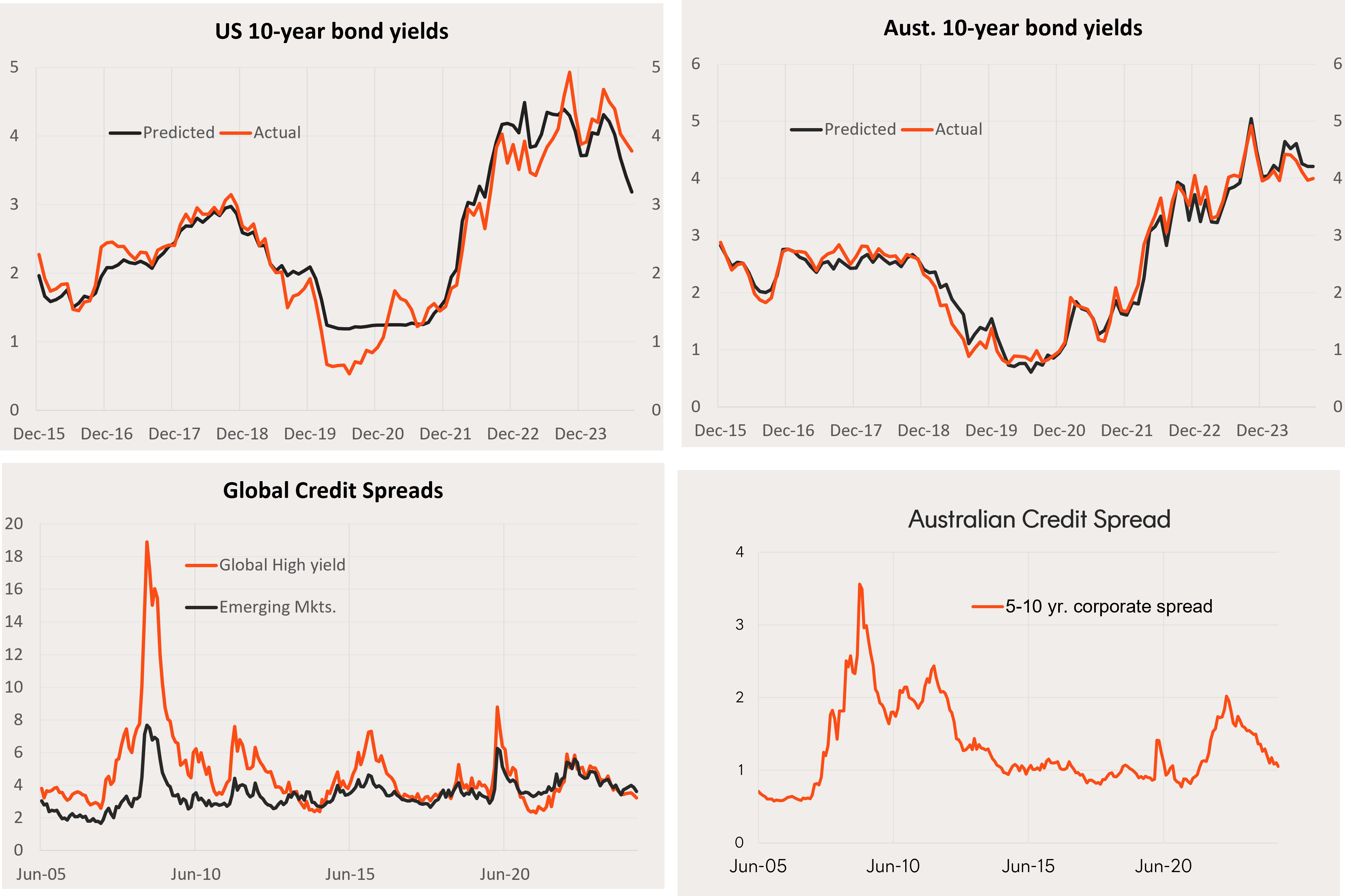
Source: Bloomberg, Betashares. Past performance is not indicative of future performance.
Australian Dollar
- The larger-than-expected US rate cut along with Chinese policy stimulus measures (late in the month) helped further boost the Australian dollar over September, which firmed from US 68c to US 69.1c. All three fundamental drivers were positive in the month, with the $US softer and the Australian-US 12-month forward expected cash rate differential widening further. Iron-ore prices also rose a further 4.6% to $US 99.8 tonne.
- According to the Betashares $A model, the $A is trading a little below fair value at US 71c. Despite likely soft iron-ore prices, the $A is expected to gradually strengthen over coming months, largely due to an anticipated softening in the US dollar.

Source: Bloomberg, LSEG, Betashares.
Global Equities
- Global equities rose further in September, with lower bond yields helping boost PE valuations, while a modest downgrade to earnings expectations left forward earnings flat. The MSCI All Country World Index returned 1.9% in local currency terms. A stronger $A, however, meant returns in unhedged $A terms were only up 0.1%.
- With global price-to-forward earnings (PE) valuations relatively elevated at 18.0, further market growth likely relies on continued strength in forward earnings. Notwithstanding the small tick down in September, earnings expectations remain upbeat, consistent with 3% further growth in forward earnings in the final quarter of 2024 and 11.7% over 2025.
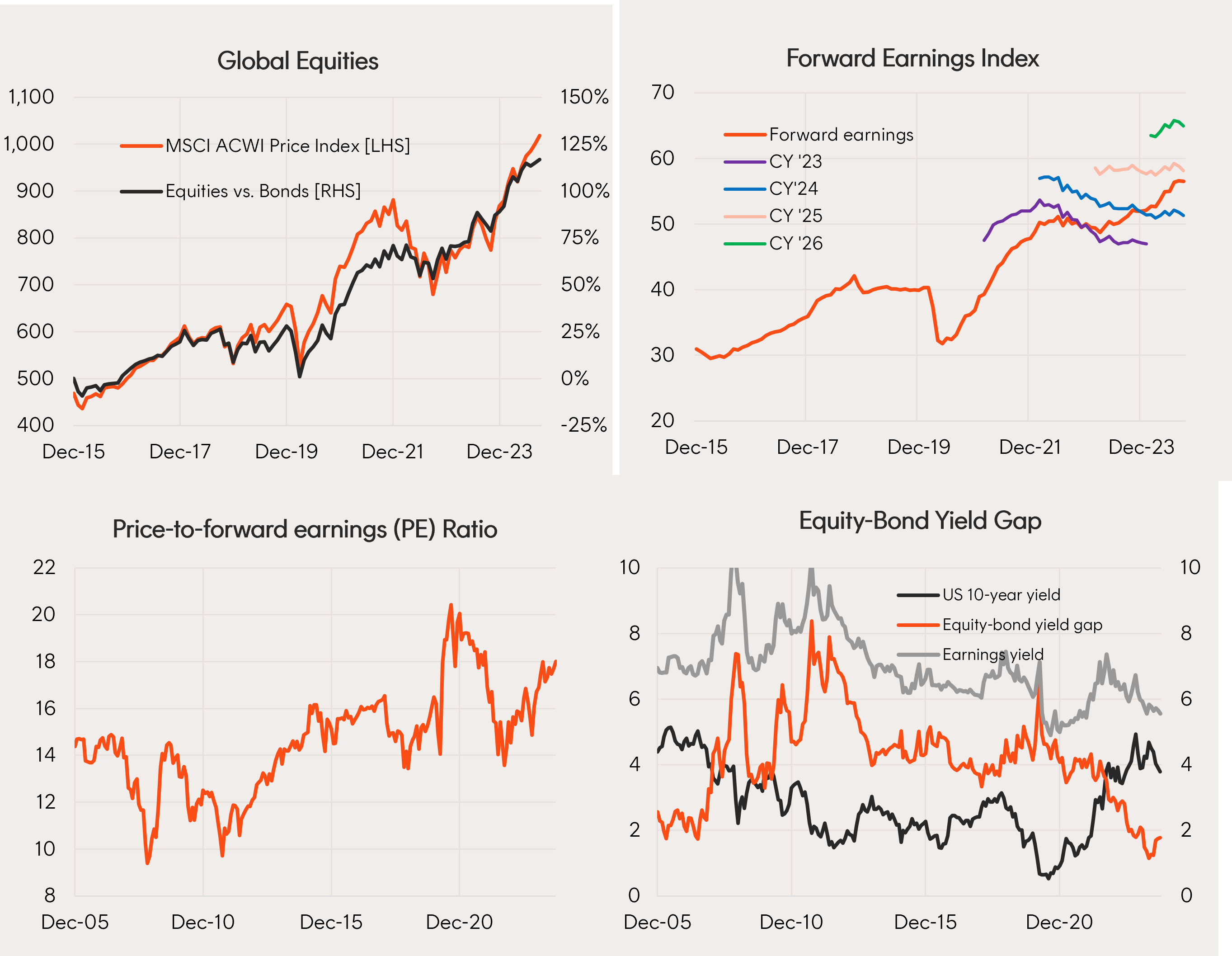
Source: Bloomberg, LSEG, Betashares. Global Equities: MSCI All-Country World Index. Global Bonds: Bloomberg Global Aggregate Bond Index ($A hedged). You cannot invest directly in an index. Past performance is not an indicator of future performance.
Global themes
- Among the eight selected Betashares global sector/thematic funds identified below, trends so far this year continue to broadly favour growth/technology companies (HNDQ), gold miners (MNRS) and banks (BNKS).
- A potential rotation to cheaper smaller/midcap US stocks (HQUS) and away from large-cap US tech stocks (HNDQ) is only tentative at this stage.
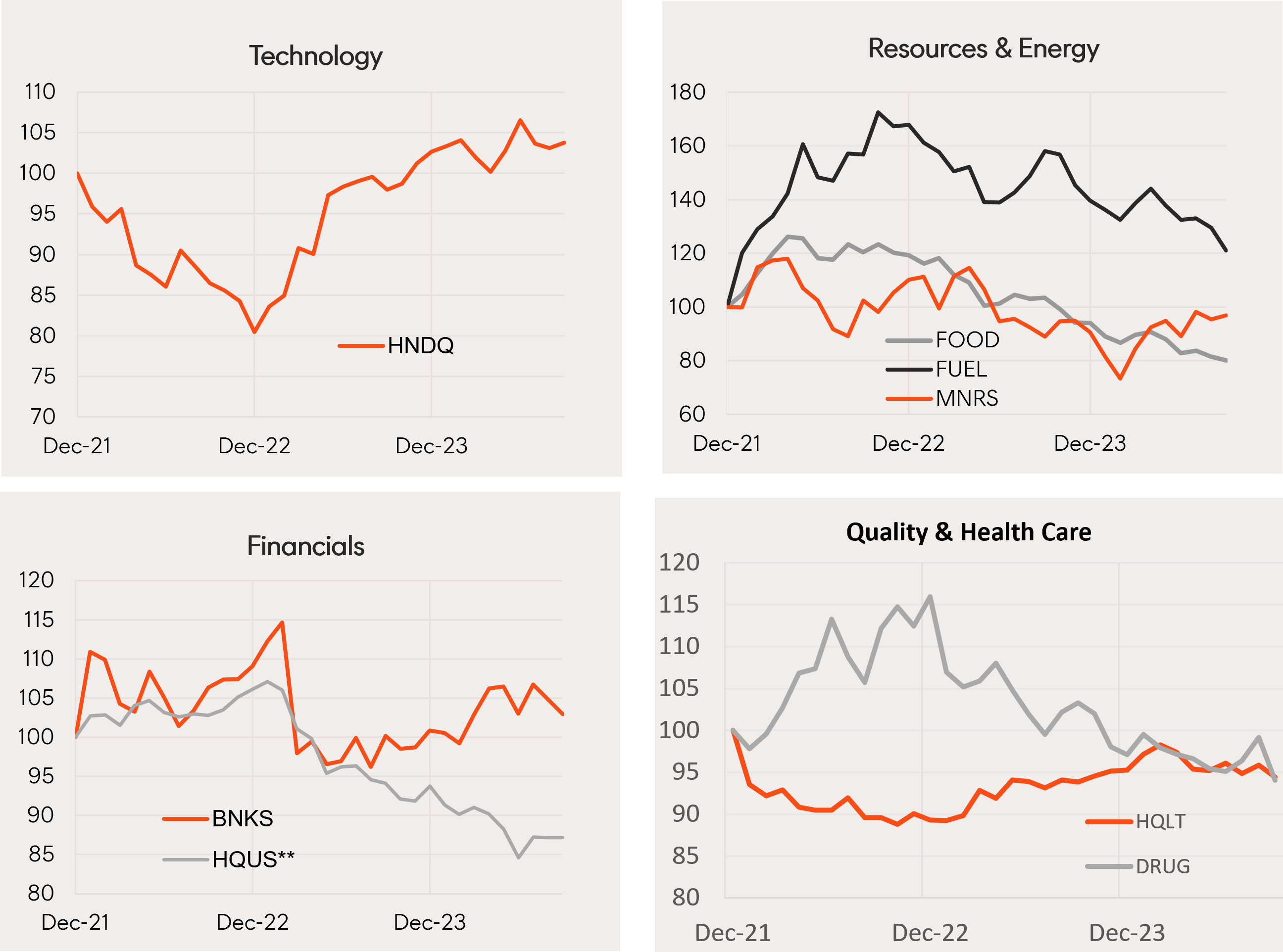
Source: Bloomberg, LSEG, Betashares. Relative performance indices against the MSCI ACWI in local currency terms. International ETF indices vs. MSCI ACWI Index performance is used to show long term performance of the asset class. Chart shows performance of the index which the relevant ETF aim to track, not the actual past performance of the ETF. *Relative momentum based on the average of 6 and 12 month return performance. **Relative performance for HQUS is against the S&P 500 market-cap weighted return index. Index performance does not take into account ETF fees and costs. ETF may not have been in existence for entire period specified in the chart. You cannot invest directly in an index. Past performance is not an indicator of future performance.
Australian Equities
- Despite a further drop in forward earnings and steady local bond yields, the S&P/ASX 200 Index returned 3.0% in September, helped by a further gain in PE valuations.
- Downgrades to corporate earnings expectations – and resulting declines in forward earnings – have continued in recent months and are the major reason behind Australia’s relative underperformance to global markets in recent times. Assuming current earnings growth expectations are maintained – which has not been apparent of late – forward earnings would grow a further 1.4% by end of 2024, and 6.2% growth over 2025 (half that expected of the global benchmark). A major drag on local earnings has been weakness in the energy and materials sector – though recently announced Chinese stimulus could see the earnings outlook brighten.
- At PE valuation of 18.4, Australian equities are trading at a slight premium to global stocks, suggesting Australian equities are not specially cheaper despite the weaker earnings outlook.
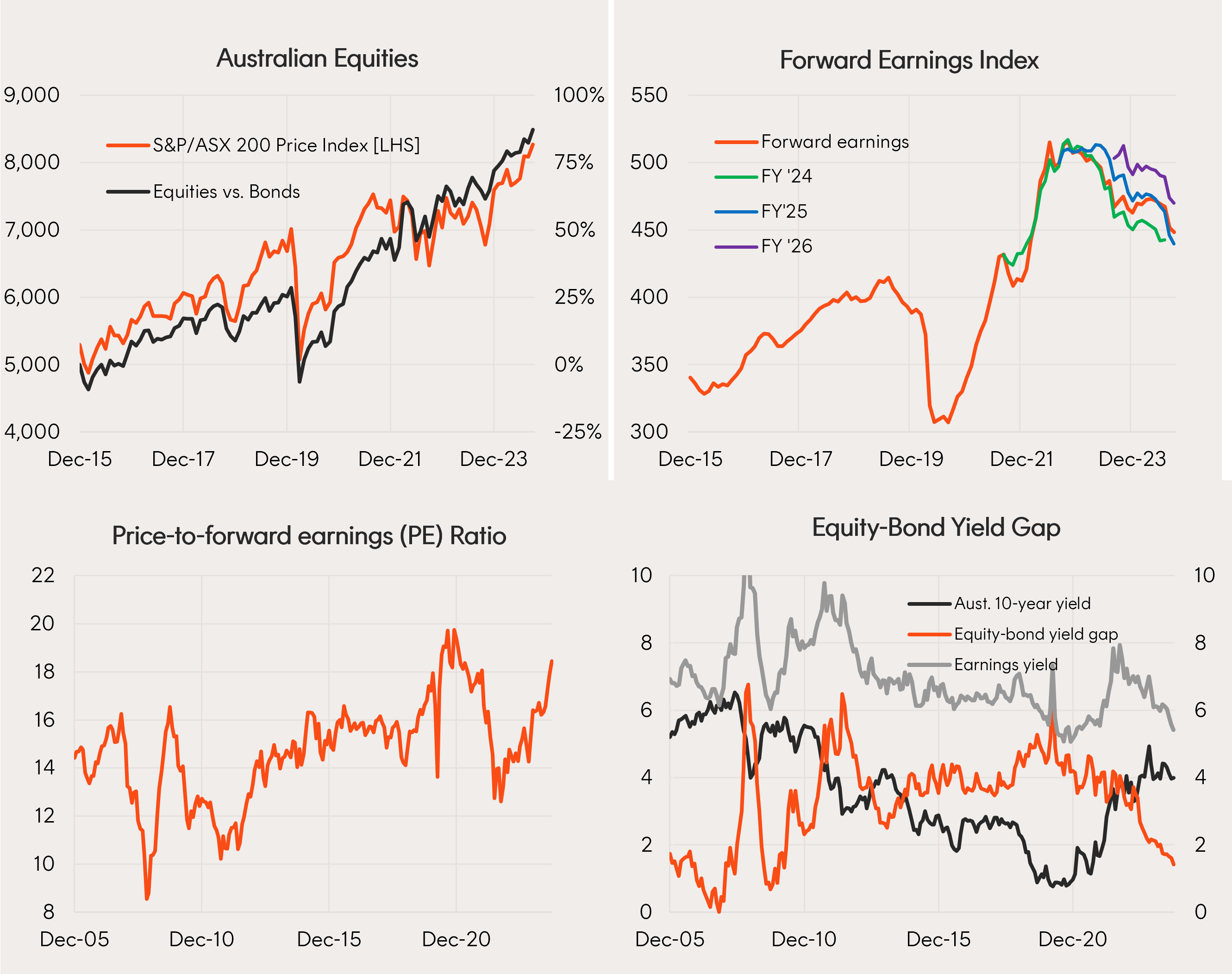
Source: Bloomberg, LSEG, Betashares. Australian Equities: S&P/ASX 200 Index. Australian Bonds: Bloomberg AusBond Composite Index. You cannot invest directly in an index. Past performance is not an indicator of future performance.
Australian Equity Themes
- Among the five selected Betashares Australia sector/thematic funds identified below, trends so far this year continue to broadly favour technology companies (ATEC), financials (QFN) and quality (AQLT).
- That said, Chinese stimulus measures helped drive a rotation toward resource stocks (QRE) in September at the expense of financials.
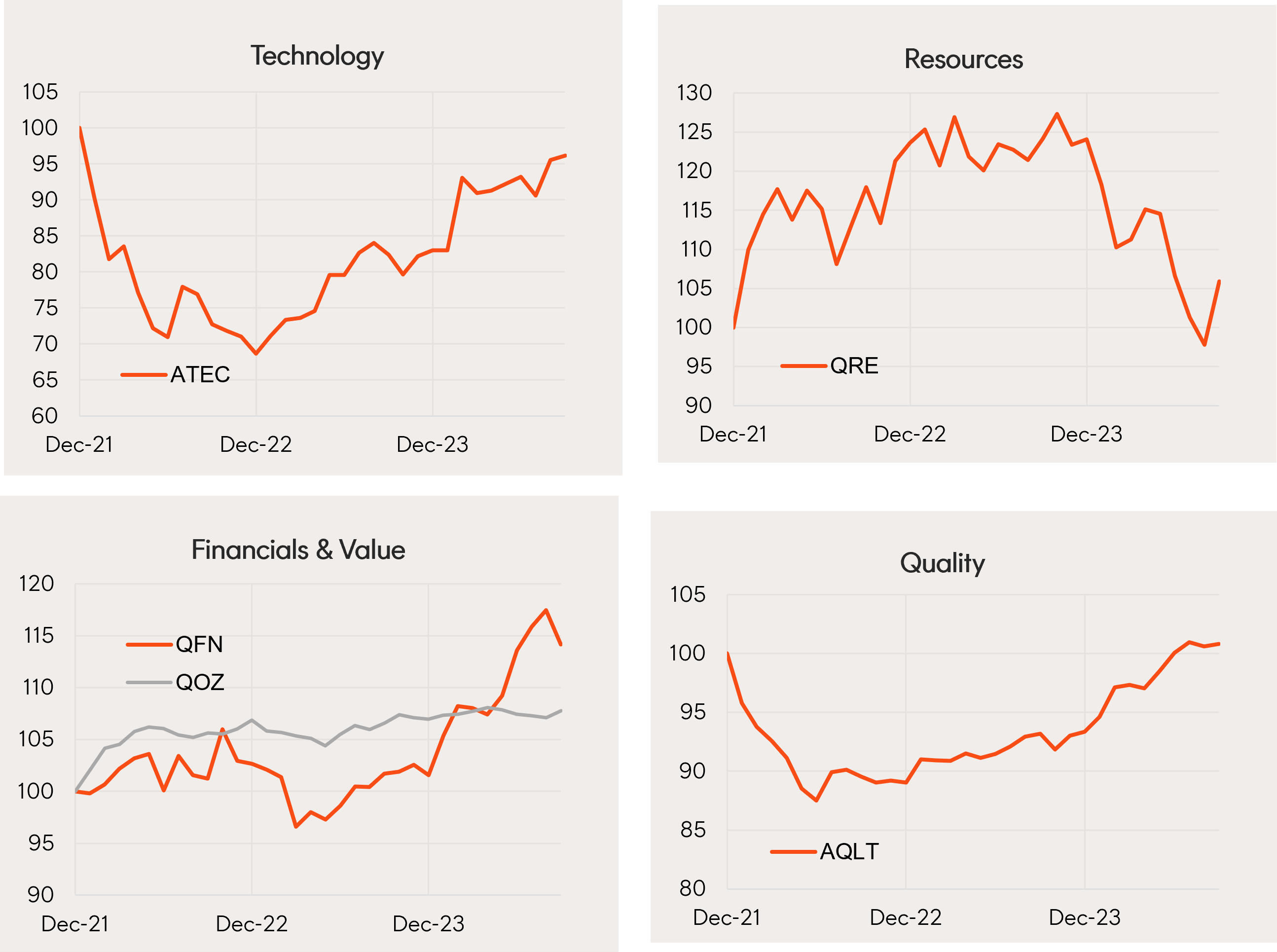
Source: Bloomberg, LSEG, Betashares. Indices of relative performance versus the S&P/ASX 200 Return Index. Index performance is used to show long term performance of the asset class. Chart shows performance of the index which the relevant ETF aims to track, not the actual past performance of the ETF. Index performance does not take into account ETF fees and costs. You cannot invest directly in an index. ETF may not have been in existence for entire period specified in the chart. Past performance is not an indicator of future performance.

